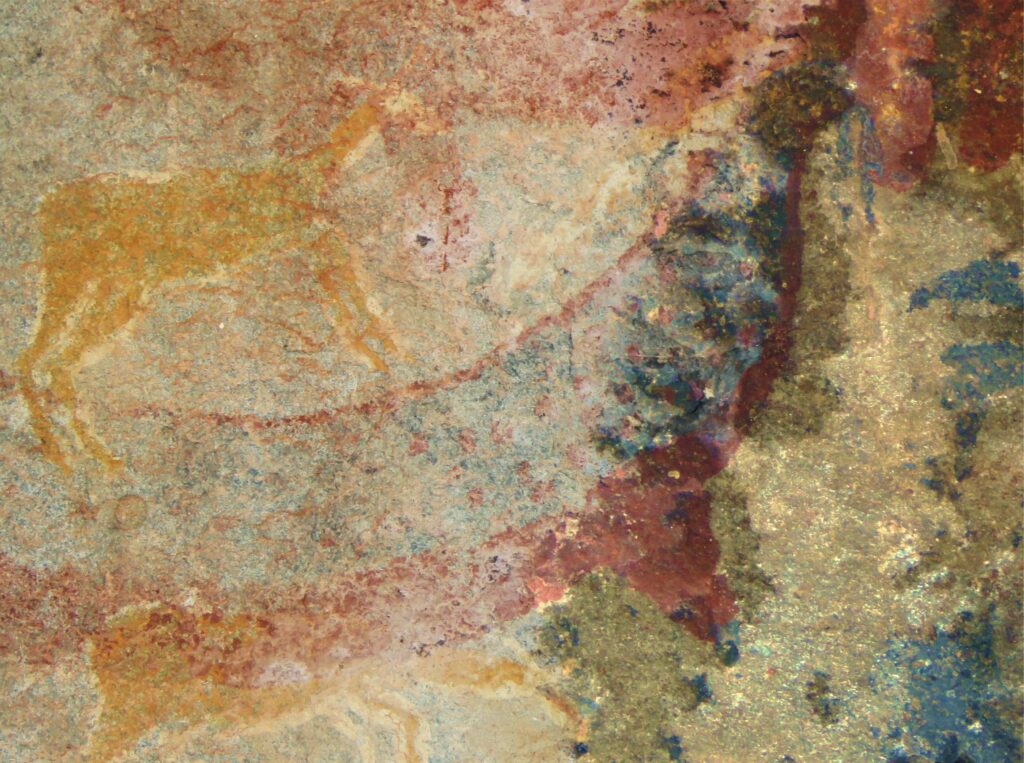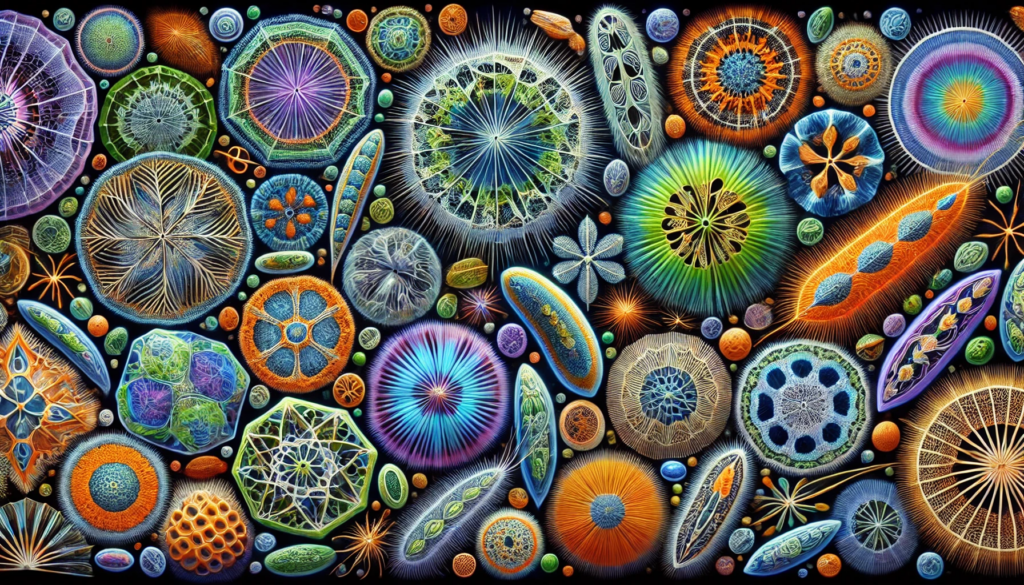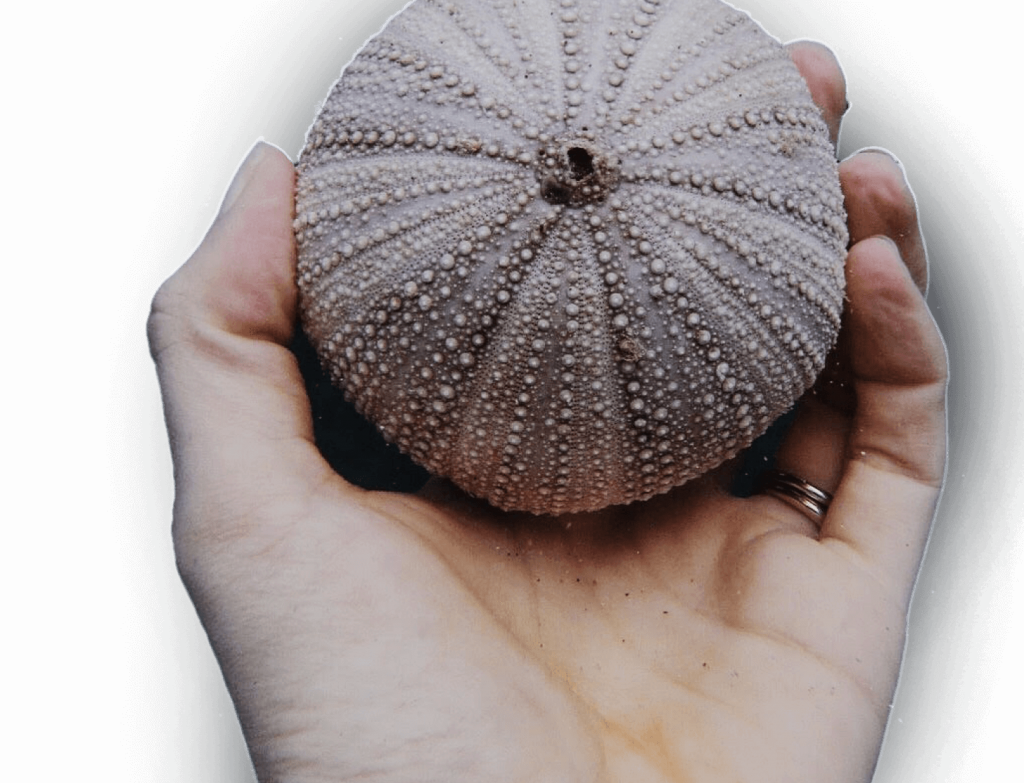Smothered Alive: Exhuming the Oldest Brittle Stars of the Southern Hemisphere
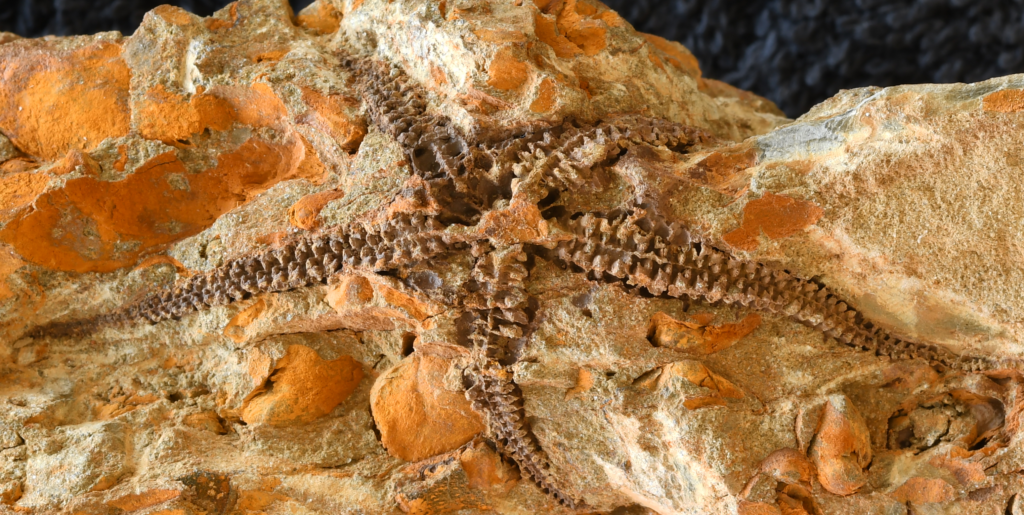
Articulated Krommaster spinousus. Photo credit: C. Reddy
In a groundbreaking study published in the scientific journal PLOS ONE, researchers Caitlin Reddy, Dr Ben Thuy, Mhairi Reid and Dr Robert Gess have unveiled the oldest brittle stars ever discovered in the Southern Hemisphere. Dating back to an era over 410 million years ago known as the Early Devonian period, these ancient spiny sea creatures from the Kromme River Valley in South Africa have been given the name ‘Krommaster spinosus.’ Remarkably, they were found in near-perfect condition, having been buried alive and preserved for millions of years.
Brittle stars, scientifically known as ophiuroids, are represented by about 2000 species and have a long fossil record, particularly in the northern hemisphere, mainly living in the shallows of the sea. Sometimes confused with their cousins, the starfish, they differ in having long whip-like arms that may reach up to 60 cm long. Most are scavengers, eating dead creatures and seaweed, though some filter food from the water.
Around 410 Mya, a group of brittle stars were sheltering in a drift of shells in a shallow sea when a pulse of mud washed out of a nearby river mouth following heavy rains. The small group of adults and youngsters were engulfed by this sudden surge of muddy water and smothered alive. Frozen in time, they were preserved whole, living amongst the shells on their last fateful day. What makes this event more extraordinary is that brittle stars, unlike other sea creatures, disintegrate soon after death. Finding them intact is extremely rare. Caitlin Reddy, the master’s student from Rhodes University leading the investigation, couldn’t believe her eyes when the largest specimen was uncovered, “The level of detail left us speechless—from the thin plates on its body to the tiny, bristly spines. This degree of preservation is astounding and very rare!“

The little drift of shells was buried over millions of years under layers and layers of mud and sand, which were ultimately transformed into rock and folded into mountains hundreds of millions of years later. These weathered away till the cluster of fossil shells containing the brittle stars was disturbed by a small farm road in the Kromme River Valley near Humansdorp. Samples analysed by Ms Caitlin Reddy were first collected by Dr Rob Gess in 2015, whilst doing the palaeontological section of an environmental impact assessment for a new power-cable route. No fossils were expected in the area, but he decided it would be best to walk out the whole proposed route as finding new fossil sites is often far more important than revisiting well-studied ones. He was making his way down a small, recently graded farm track when he spotted an unusual orange lens of rock (a chunk of rock that is thick in the middle and thin at the edges) graded out of the bank of the road. Looking closer, he realised that it was almost entirely comprised of fossil lamp shells with brittle stars intertwined within them. Understanding that this was something exciting and new, and not wanting to damage the delicate fossils, he removed some large chunks to archive in the Albany Museum collection for later research. There they waited, whilst other discoveries kept him busy – until Caitlin came to his lab to unravel their intriguing story as a graduate student under his supervision. Rob arranged additional supervision from Ms Mhairi Reid, who did her MSc on younger brittle stars from South Africa, and later from Dr Ben Thuy, current world brittle star expert.
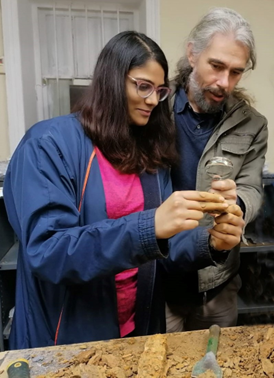
The blocks archived in 2015 were carefully broken apart under laboratory conditions to reveal the three-dimensional preserved impressions of the ancient brittle stars. These are, in fact moulds in the mud rock where the original brittle stars’ skeletons dissolved away hundreds of millions of years ago. Brittle stars are made up of interlocking plates that are different in every species. To recover the exact shape of the plates, Caitlin carefully cast the imprints with black silicone. This also revealed that the new species had been covered in thorn-like spines. The black casts revealed minute details that, after the casts had been whitened, were photographed under a microscope for comparison with all other known species. This revealed that the plates had a unique shape requiring a formal description of a new species. Caitlin discussed her photos with her colleagues in order to produce an international standard scientific description.
According to Dr Ben Thuy, “Thanks to the outstanding preparation and digitization work by Caitlin, I was able to contribute to this exciting scientific study entirely by virtual means, working on high-resolution photographs of the fossils. Thus, none of the valuable and fragile specimens had to be shipped. This is a prime example of how international scientific collaborations come to fruition in times of digital communication.”
The brittle stars prove to be a species entirely new to science that so far is only known from this one small lens of rock. They were covered in long, sharp spines and so have been named Krommaster spinosus (after the Kromme River and their spiny nature). Excitingly, they provide the earliest known record of brittle stars from the entire ancient supercontinent of Gondwana (which later broke up into Africa, South America, Antarctica, India, Australia and Madagascar)
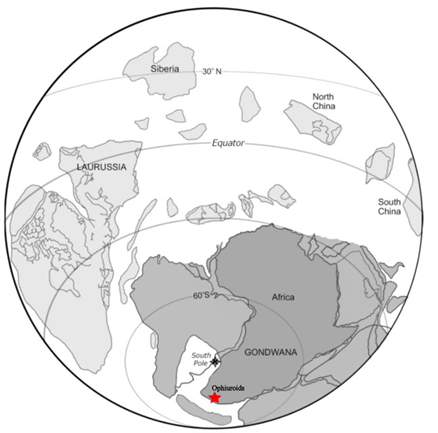
They belong to an ancient group of brittle stars that were later entirely replaced by the types we see today. In addition to being the oldest brittle stars known from Gondwana, they are also some of very few known from ancient polar regions, as southern Africa was then within the Antarctic circle. This is important in understanding the early diversification of brittle stars as, so far, the majority of early known species are recovered from rocks formed nearer the equator – largely from the northern supercontinent of Laurasia (which later split into Europe, Greenland, North America and parts of Asia). Together with an existing species described in the same paper, these are the oldest brittle stars from the whole continent of Gondwana, including Africa.
Dr Rob Gess commented, “I always find it completely incredible, almost magical, that we can find frozen in time, records of such passing moments. Here, we are able to see these brittle stars, twined in amongst a drift of old seashells, exactly as they were one minute of one day, 410 million years ago, when they were suddenly smothered in mud. It’s completely thrilling. Caitlin has done an amazing job preparing and analysing the material to reveal this wonderful story.”
